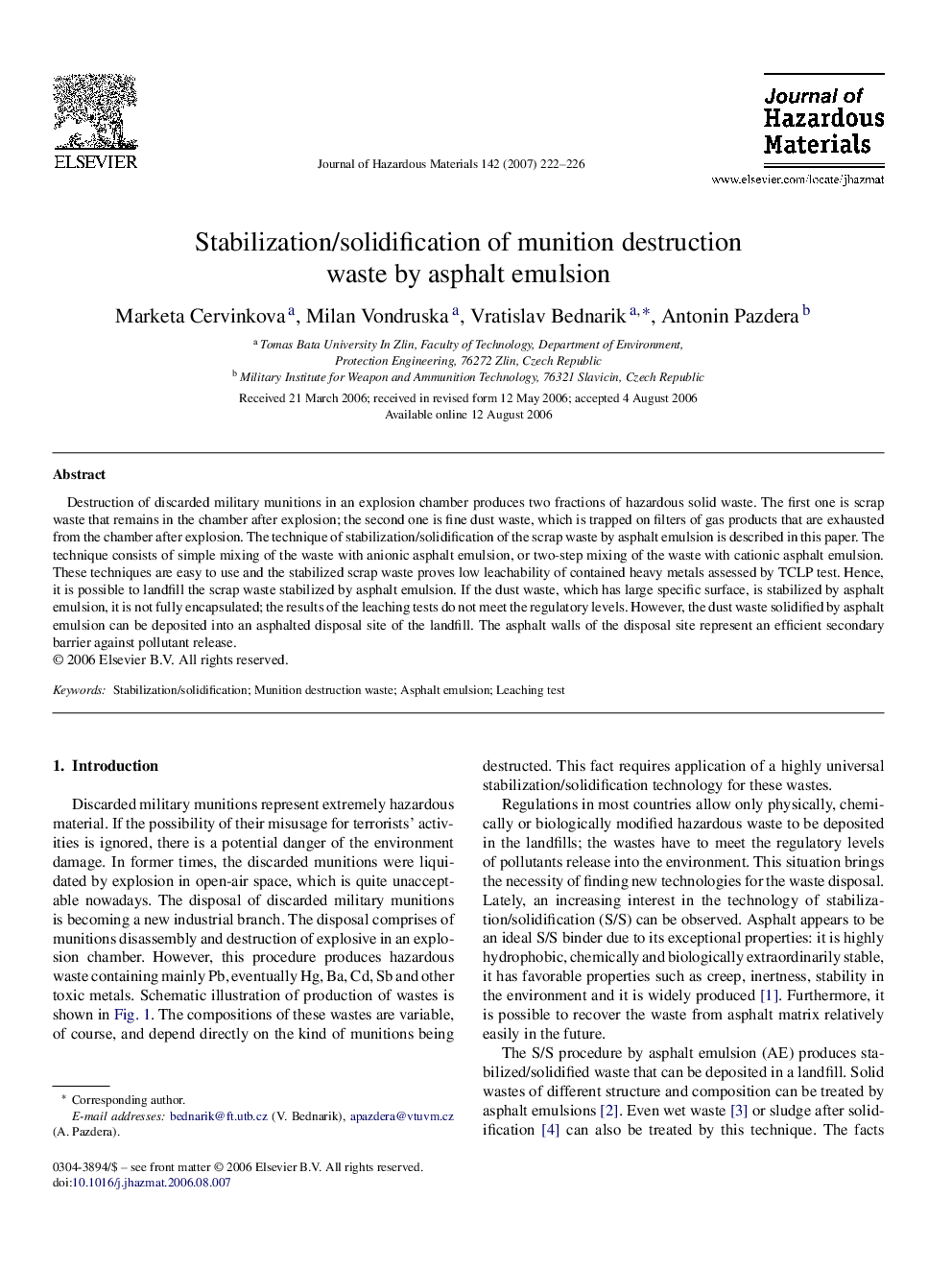| Article ID | Journal | Published Year | Pages | File Type |
|---|---|---|---|---|
| 584542 | Journal of Hazardous Materials | 2007 | 5 Pages |
Abstract
Destruction of discarded military munitions in an explosion chamber produces two fractions of hazardous solid waste. The first one is scrap waste that remains in the chamber after explosion; the second one is fine dust waste, which is trapped on filters of gas products that are exhausted from the chamber after explosion. The technique of stabilization/solidification of the scrap waste by asphalt emulsion is described in this paper. The technique consists of simple mixing of the waste with anionic asphalt emulsion, or two-step mixing of the waste with cationic asphalt emulsion. These techniques are easy to use and the stabilized scrap waste proves low leachability of contained heavy metals assessed by TCLP test. Hence, it is possible to landfill the scrap waste stabilized by asphalt emulsion. If the dust waste, which has large specific surface, is stabilized by asphalt emulsion, it is not fully encapsulated; the results of the leaching tests do not meet the regulatory levels. However, the dust waste solidified by asphalt emulsion can be deposited into an asphalted disposal site of the landfill. The asphalt walls of the disposal site represent an efficient secondary barrier against pollutant release.
Related Topics
Physical Sciences and Engineering
Chemical Engineering
Chemical Health and Safety
Authors
Marketa Cervinkova, Milan Vondruska, Vratislav Bednarik, Antonin Pazdera,
